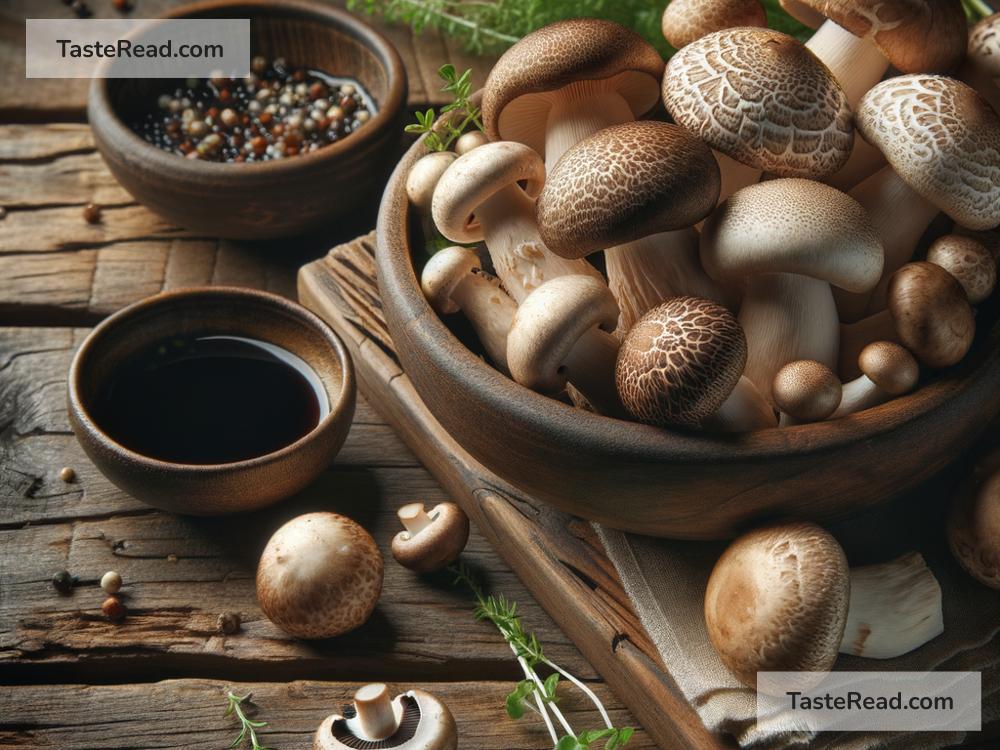The Science Behind the Umami Taste in Mushrooms
When you think about food flavors, sweet, salty, sour, and bitter probably come to mind first – those are the four tastes you learn about in school. But there’s another taste that chefs and scientists describe as “the fifth taste”: umami. Umami is what gives certain foods, like mushrooms, their rich, savory, and deeply satisfying flavor. If you enjoy mushrooms in your pasta, pizza, or soup, you’re actually experiencing the science of umami. But what is umami, and why are mushrooms so good at delivering this unique taste? Let’s dive in!
What Is Umami?
The word “umami” comes from Japanese and loosely translates to “pleasant savory taste.” It was first identified over 100 years ago by Japanese scientist Kikunae Ikeda, who noticed that foods like dashi (a broth made from seaweed) had a flavor that didn’t fit into the traditional categories of sweet, salty, sour, or bitter. Ikeda discovered that umami is closely linked to a specific type of molecule called glutamate.
Glutamate is a type of amino acid, which is one of the building blocks of proteins. When you eat foods high in glutamate, your taste buds sense umami as a mouthwatering, savory flavor. Imagine the taste of a hearty vegetable broth or a sizzling steak. That’s umami in action!
Why Do Mushrooms Taste Umami?
Mushrooms are among the best sources of umami in nature. Why? Because they contain high levels of glutamic acid, a form of glutamate. Different species of mushrooms have varying amounts of glutamic acid, which is why some mushrooms taste stronger or meatier than others. For example, shiitake mushrooms—popular in Asian cooking—are particularly rich in umami, while white button mushrooms have a subtler flavor.
But that’s not the only trick mushrooms have up their sleeve. Mushrooms also contain compounds called nucleotides, which make the umami taste even stronger. Two nucleotides—guanosine monophosphate (GMP) and inosine monophosphate (IMP)—work together with glutamate to amplify the savory flavor. Think of it like teamwork; the nucleotides boost the flavor intensity, so the umami becomes even more delicious and noticeable.
When you cook mushrooms, something magical happens. The heat breaks down the mushrooms’ cell walls, releasing their natural glutamate and nucleotides and deepening their umami flavor. That’s why roasted or sautéed mushrooms taste so much better than raw ones—they’ve unlocked their full umami potential!
The Role of Umami in Cooking
Umami isn’t just a flavor; it’s a secret weapon in cooking. It can elevate dishes, making them feel hearty and satisfying, even without using meat or unhealthy additives. That’s one reason mushrooms are so popular in vegetarian and vegan diets. They mimic the savory, “meaty” flavors that people often crave while remaining plant-based.
Chefs often use mushrooms to add depth to soups, stews, sauces, and stir-fries. For instance, adding dried shiitake mushrooms to a broth can create a powerful umami punch because drying mushrooms concentrates their glutamate and nucleotide content.
Even the dark gills of portobello mushrooms pack a strong umami flavor, which is why they make such a good base for burgers or stuffed recipes. If you’re creating a dish and it feels like it’s missing something, try incorporating mushrooms—you’ll often find the flavor becomes richer and more complex.
Why Does Your Brain Love Umami?
The love for umami isn’t just about flavor; it’s wired into your brain! Scientists believe we evolved to enjoy umami because it signals foods rich in proteins and nutrients. Glutamate and nucleotides are found naturally in protein-heavy foods, which were valuable to our early ancestors for survival. When our taste buds detect umami, it sends a message to our brain that says, “This food is packed with good stuff—eat more!”
Interestingly, breast milk is high in glutamate, which means we’re exposed to umami flavors from the moment we’re born. This early connection might explain why umami feels comforting and satisfying to so many people.
Mushrooms, Umami, and Health
Aside from being delicious, mushrooms also come with health benefits. They’re low in calories but rich in nutrients like vitamins, minerals, and antioxidants. They also provide ergothioneine, a compound that helps protect cells from damage. By adding umami-packed mushrooms to your meals, you’re not just enhancing flavor—you’re boosting nutrition.
For people looking to reduce their salt intake, umami can help. Foods high in umami stimulate the taste buds in a way that can make dishes taste flavorful even with less salt. That’s good news for anyone watching their sodium consumption for heart health or other reasons.
Boosting Umami in Everyday Cooking
Want to amp up the umami in your everyday meals? Here are some tips:
- Add dried mushrooms: They’re a concentrated umami powerhouse. Toss them into soups, sauces, or risottos for a flavor upgrade.
- Combine ingredients high in umami: Pair mushrooms with other umami-rich foods like tomatoes, soy sauce, parmesan cheese, or seaweed.
- Experiment with cooking techniques: Sauté, roast, or grill your mushrooms to unlock their full flavor potential.
- Use mushroom powder: Made from dried, ground mushrooms, this seasoning is an easy way to add instant umami to your dishes.
In Conclusion
Mushrooms are nature’s little umami factories, bringing a unique, savory flavor to countless dishes. Their high levels of glutamate, combined with nucleotides, create a deep and satisfying taste that science loves just as much as your taste buds do. Whether you’re using mushrooms as a meat substitute or simply enjoying their earthy flavor, understanding the science behind their umami taste makes every bite even more fascinating—and delicious. So next time you cook with mushrooms, savor the science happening in each flavorful morsel!


